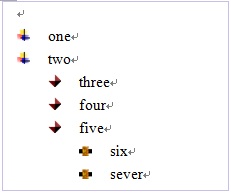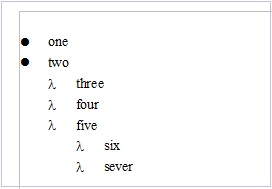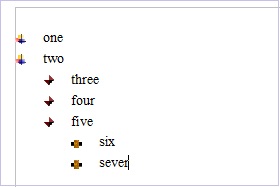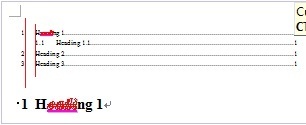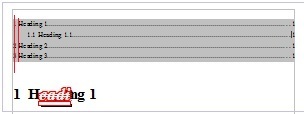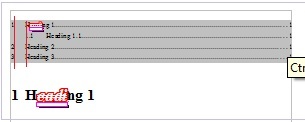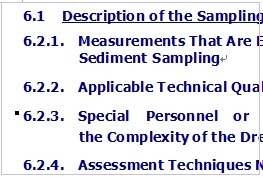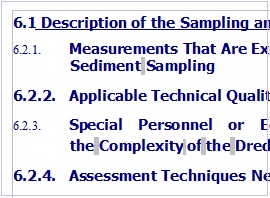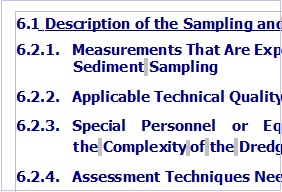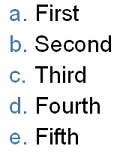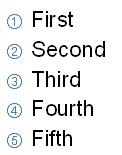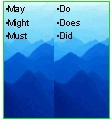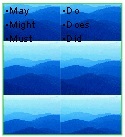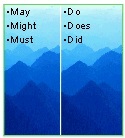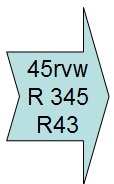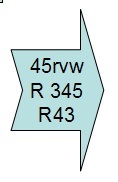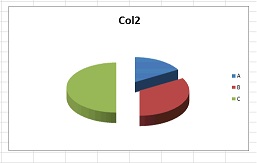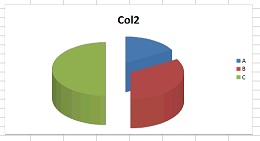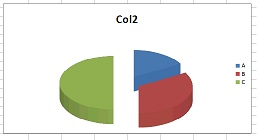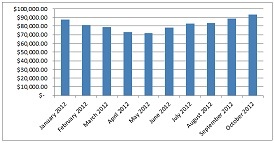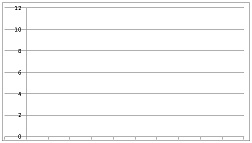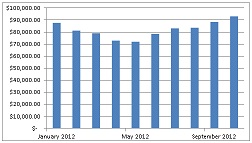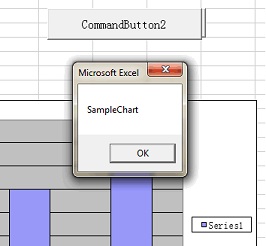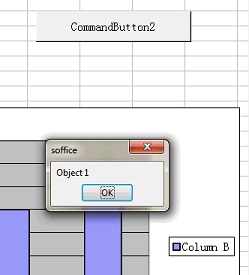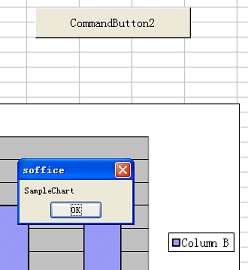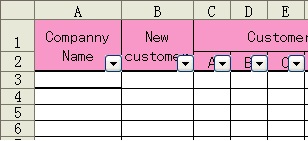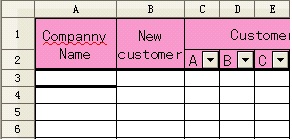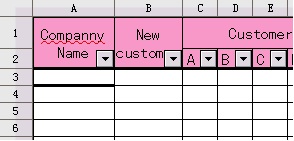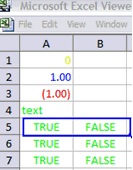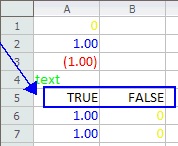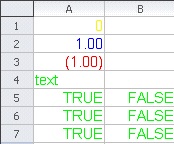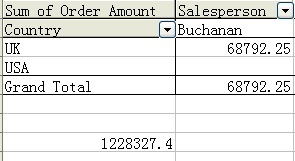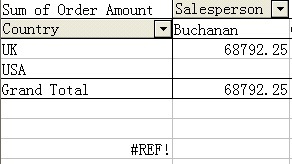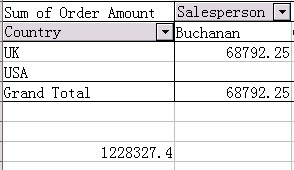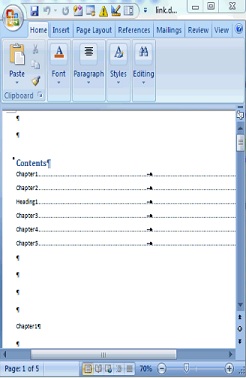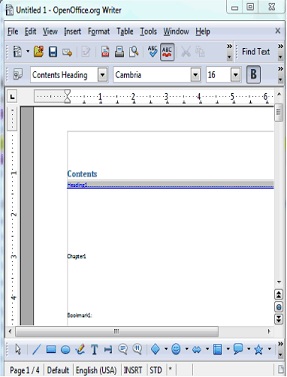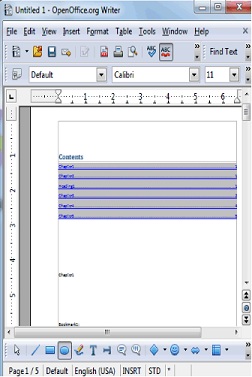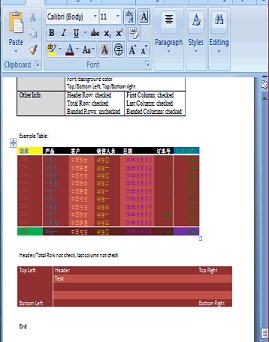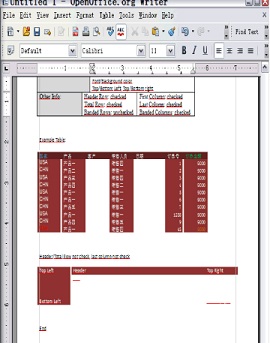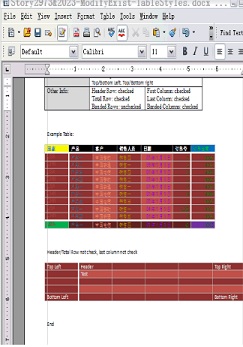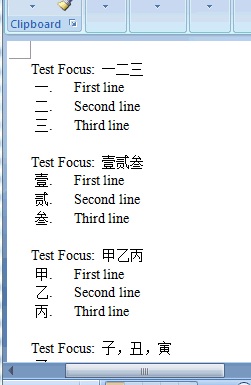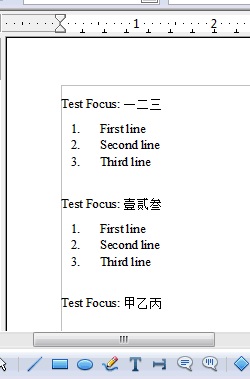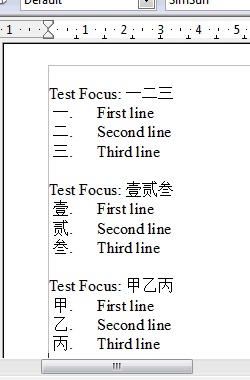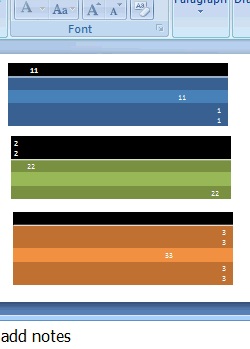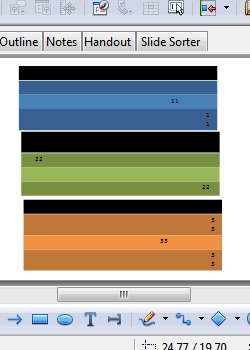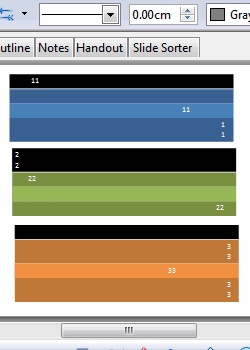Traduzione: Mario Pichetti, Andrea Pescetti
Note generali - TRADUZIONE IN CORSO
Apache OpenOffice 4.0 è ora disponibile per il download dal nostro sito ufficiale. Dopo il grande successo dalla versione 3.4, scaricata oltre 57 milioni di volte, questa nuova versione presenta sostanziali novità, miglioramenti e correzioni di bug. OpenOffice 4.0 contiene una nuova interfaccia utente, la Sidebar supporto completo per 22 lingue (3 nuove), 500 bug fix, miglioramenti nella gestione di file di Microsoft Office, miglioramenti nel disegno e nella grafica, miglioramenti nella velocità, etc. Questi punti sono trattati in dettaglio nel resto di questo documento.
Un'altra cosa che noterete subito in questa pagina, nel nostro sito e altrove è il nostro nuovo logo, disegnato dall'altoatesino Chris Rottensteiner. Il nuovo logo è il risultato di molti passaggi, discussioni, collaborazione tra designer e un concorso in cui 50mila utenti hanno votato 40 proposte.
Un saluto speciale agli utenti che aggiornano dalla versione 3. Speriamo che le nuove funzioni siano di vostro gradimento, specialmente la Sidebar. Questa funzione è basata sul codice contribuito da IBM, tramite Lotus Symphony. Abbiamo adattato quel codice e in base al feedback di decine di utenti come voi lo abbiamo migliorato e integrato in OpenOffice.
Per i nuovi utenti, benvenuti nella comunità! Speriamo che possiate trovare piena soddisfazione in Apache OpenOffice, la più diffusa suite di produttività personale gratuita, libera e open source.
Come sempre, accogliamo con piacere i vostri commenti:
- Per il supporto, utilizzate il nostro forum.
- Le segnalazioni di bug vanno inserite in Bugzilla.
- Domande generiche vanno inviate alle nostre mailing list.
Ci trovate anche su Twitter, Facebook e Google+.
Spirito Open Source e comunità
Apache lavora in modo trasparente come una comunità aperta di volontari. Sviluppiamo software open source a beneficio di tutti. Non richiediamo donazioni in denaro. Ma se siete interessati ad aiutare, a darci una mano per sviluppare la prossima versione di OpenOffice, contattateci. Non siamo solo programmatori: svolgiamo test, progettiamo interfacce, creiamo siti web, scriviamo documentazione, lavoriamo nell'accessibilità, traduciamo, curiamo i social media... Accogliamo con gioia volontari in tutte le aree. Per ulteriori informazioni, leggere (in inglese) Get Involved.
Nuove funzioni e miglioramenti
Nuova Sidebar
La Sidebar è la più visibile delle nuove funzioni dell'interfaccia utente in tutte le applicazioni di OpenOffice.
La Sidebar usa nel modo migliore gli schermi "wide" oggi comuni. Il pannello delle proprietà si adatta al contesto e mostra le caratteristiche del documento usate più comunemente nel compito che si sta svolgendo.
Fate clic per ingrandire le immagini:
Schermate di Writer mentre si lavora con testo, immagini e disegni (da sinistra a destra). Il nuovo logo di OpenOffice è stato incollato come bitmap (al centro) e come vettoriale (a destra).
Se vi trovate a non usare spesso un certo pannello, potete semplicemente fare clic sul suo titolo per ridurlo a una singola riga di testo. Potrete espanderlo nuovamente facendo clic sull'icona "+".
Vari pannelli ridotti ed espansi
- Undici pannelli di proprietà sono stati convertiti da IBM Lotus Symphony: Allineamento, Area, Formato Cella, Grafica, Linea, Formato Numero, Pagina, Paragrafo, Posizione e dimensione, Testo e A capo.
- Sette pannelli vengono dalla pre-esistente implementazione di Impress: Disponibili per l'utilizzo, Animazione personalizzata, Layouts, Usati di recente, Transizione diapositiva, Disegno tabella, Usati in questa presentazione.
- Quattro sono dialoghi non modali (finestre aggiuntive che non bloccano le altre operazioni): Funzioni, Gallery, Navigatore, Stili e formattazione.
- Uno è nuovo: Inserisci.
Pannelli da Symphony, da Impress, dialoghi di OpenOffice (da sinistra a destra).
La larghezza della Sidebar è variabile. I controlli adattano le loro dimensioni di conseguenza. Se vi occorre più spazio, potete sganciarla e addirittura spostarla su un altro schermo, o ridurla a una semplice linea verticale. Basta fare clic su una delle icone per mostrare nuovamente la Sidebar.
Diverse larghezza della Sidebar: massima, predefinita, molto stretta, ridotta a una linea (da sinistra a destra).
Sidebar sganciata, può essere spostata su un secondo schermo
Ovviamente la Sidebar non copre tutte le funzioni di OpenOffice. Se si servono funzioni avanzate, fate clic sull'icona "..." (opzioni avanzate) nel titolo di ciascun pannello per avere una finestra con tutte le opzioni avanzate.
Aprire la finestra con le opzioni avanzate.
Altre informazioni (in inglese) sul wiki di OpenOffice: Sidebar.
Migliore compatibilità con Microsoft Office
Apache OpenOffice migliora costantemente la compatibilità con i documenti di Microsoft Office. Anche questa versione contiene vari miglioramenti e sistemazioni di difetti rispetto ad Apache OpenOffice 3.4.1.
Documenti di testo
Descrizione |
Originale |
AOO 3.4.1 |
AOO 4.0 |
|---|---|---|---|
Elenchi puntati grafici in MS word 2003 |
|
|
|
Indici in MS Word 2003 |
|
|
|
Riferimenti interni |
|
|
|
Numerazione legata al paragrafo in MS Word |
|
|
|
Presentazioni
Descrizione |
Originale |
AOO 3.4.1 |
AOO 4.0 |
|---|---|---|---|
Mantenimento della numerazione speciale nei file PPT |
|
|
|
Esportazione di sfondi grafici nel file PPT |
|
|
|
Il riempimento dello sfondo grafico è mostrato correttamente nei file PPT |
|
|
|
Supporto di connettori legati a una tabella PPT |
|
crash in AOO 3.4.1 |
|
Frecce con la proprietà "Adatta al testo" importtate correttamente |
|
|
|
Effetti 3D preservati se si importa una linea |
|
|
|
Fogli elettronici
Descrizione |
Originale |
AOO 3.4.1 |
AOO 4.0 |
|---|---|---|---|
Conservazione dell'altezza di un grafico nei file Excel |
|
|
|
Supporto dell'intervallo specificato da una formula o nome intervallo come dati di un grafico |
|
|
|
Mostra nome del grafico attraverso la VBA API con un clic |
|
|
|
Supporto di filtri sulle celle unite |
|
|
|
Supporto di formattazione definita dall'utente in XLS per i valori VERO e FALSO |
|
|
|
Supporto di GETPIVOTDATA in Excel |
|
|
|
Supporto per il formato "0_;.00" |
|
|
|
OOXML generico
Descrizione |
Originale |
AOO 3.4.1 |
AOO 4.0 |
|---|---|---|---|
Supporto per il livello di struttura in DOCX |
|
|
|
Supporto per sfondi colorati di tabella dagli stili di tabella DOCX |
|
|
|
Supporto per più tipi di elenchi numerati e puntati in DOCX |
|
|
|
Supporto per colori nelle tabelle PPTX |
|
|
|
Miglioramenti grafici (DrawObjects)
Nuovo schema di colori
Il nuovo schema di colori (palette) è migliorato e contiene colori piùutili e disposti in modo più efficiente.
Il nuovo schema è un misto tra quello di IBM Lotus Symphony e quello di OpenOffice 3.4.1.
Nuove sfumature/gradienti
Le sfumature sono state completate con nuove sfumature provenienti principalmente da IBM Lotus Symphony. Le vecchie sfumature rimangono, alla fine della lista. Le nuove sfumature sono molto più adatte per utilizzi come sfondo di presentazione.
Nuova Gallery
Nuovi temi di Gallery provenienti da Symphony.
- Frecce
- Punti (estesi)
- Computer
- Diagrammi
- Ambiente
- Finanza
- Persone
- Scuola
- Simboli
- Forme di testo
- Trasporto
Miglioramenti alla Gallery esistente
- I vecchi temi sono stati mantenuti e in alcune occasioni estesi
- La Gallery può ora utilizzare grafica SVG
- Molta grafica nuova è in formato SVG, più leggero e dotato della massima qualità (vettoriale)
- Possibilità di importare i propri disegni SVG e Metafile
- Supporta disposizione orizzontale o verticale con adattamento automatico
- Integrata nella Sidebar
Refined the Selection Handles User Interface
- Selection Handles were reworked to be more distinguishable.
- Transparency was added to give a slight 'clue' when the Handles cover something, but only for the Handle's fill (not their outlines) to not make them harder to view as necessary.
- The design was slightly rounded.
- Colors were tweaked a little bit for better identification (mainly when Handles are selected).
- When Keyboard-travelling over handles (CTRL-TAB) yellow handles used for CustomShapes now blink as the other handles to visualize the active handle correctly.
Refined Selection Visualization
- For many occasions the selection of objects or multiple objects got enhanced using the selection color from the system.
- Usage and fetching of that system-wide SelectionColor was unified to guarantee it for all selections on all Systems.
- A slight blinking was added to identify objects where text can be added by starting to type or pressing return.
This is used in various places such as; Objects with TextEdit mode, highlighting of objects as Drag&Drop target or object manipulation (dashed black/white lines were used before).
Better Print Preview
The PrintPreview in the Print dialog is now fully AntiAlialised. The previous version was not, thus thin lines could vanish or produce missing parts.
Enhanced conversion to Bitmap Graphics
The conversion to Bitmap graphics is greatly enhanced for all kinds of draw objects, including chart OLEs and others. This is not only useful for internally converting objects to bitmaps, but also used for exports where bitmaps are needed, and the system clipboard. It works with single objects as well as multiple selections. Transparencies of the object and AntiAliasing on its edges are perfect now.
Enhanced FillType 'Bitmap'
All DrawingObjects which can have a Bitmap filling can now profit from the new, greatly enhanced Bitmap FillType:
- The new Bitmap FillType preserves Transparency, the old version was not capable of this and always added a white background.
- It allows the use of vector graphics which stay vector graphic when processed (especially useful in e.g. printing, PDF and other exports).
- It supports SVG and Metafile as FillData, no longer restricted to BitmapData.
- Tiling, AutoFit, Size, Position and Offset settings are fully supported (in Area dialog).
- Animated GIF's are now allowed as FillTypes.
Examples of this include:
- Self-create a scaling-independent fill by drawing anything anytime using DeawObjects
- convert it to Metafile
- create a FillStyle based on it
- Use a SVG or import a vector format (WMF) to define a new FillStyle.
Think about the possibilities for filling the Backgrounds of Pages, Chart bars or other items. This will be used as vector data when printing or at PDF export.
Enhanced Copy/Paste
All applications now support transparent and anti-aliased versions of, for example, DrawObjects in the selection to be exchanged with external applications. This is a result of the enhanced conversion to Bitmap and adding the PNG graphic format to the supported clipboard formats.
Non-Graphic objects are converted on-demand, and graphic objects are copied with full transparency and AntiAliasing support.
It is now possible to Copy/Paste any object to an external PixelGraphic application, modify it as needed, and copy it back to any OpenOffice Application without quality loss. This allows everyone easy and complete image manipulation outside the Office with the tool of his choice and the capabilities he needs.
Enhanced Drag&Drop
Drag&Drop has been enhanced by an 'internal' mode. It is now possible to Drag&Drop anything 'onto' an existing DrawObject to change it's graphic or fill style when holding CTRL+SHIFT (Ctrl+Cmd on Mac) during Drag&Drop.
As visual control, the target object for the Drag&Drop is visualized using the new Selection Visualization and a unique MouseCursor.
- Drag&Drop from external: change FillStyle to Bitmap (including transparence), use e.g. SVG or metafile
- Drag&Drop internal (klick on the source object(s), wait a second until MousePointer changes, start dragging, hold CTRL+SHIFT)
- when source is a DrawObject: Styles are copied (LineStyle, FillStyle, etc.)
- when source is a GraphicObject: FillStyle is adapted to source's geometry content
Here is an example:
(a) Draw an object, e.g. a rounded rectangle with an outline, Draw an arrow object, choose fill and line style for it.
(b) If you Drag&Drop onto the target object, it copies FillStyle and LineStyle.
(c) If you convert the arrow to metafile (e.g. using context menu), Drag&Drop onto the target object, it gets filled with the arrow's vector data.
This comes in very handy if you need to quickly define an object FillStyles or want to copy the GraphicStyles of one object to others.
Also very useful:
- You can use the Gallery as in-betwen space for DrawObjects or GraphicObjects used for that purpose.
- You can directly Drag&Drop from there onto DrawObjects.
- You can Drag&Drop from external sources onto DrawObjects.
Adapt LineStart/End to LineWidth
It is practical when you change the LineWidth of an Object which has ArrowHeads defined at its start/end when the ArrowHeads used get adapted to your LineWidth change; else you have to adapt these by your own. This was already done for Draw and Impress. This is now unified and centralized and works in all OpenOffice applications.
SVG Export enhancements
Some enhancements for SVG export were added to avoid some quality losses. More improvements are planned in this area for future releases.
SVG/Metafile Break improvements
If an imported SVG/metafile is manipulated, it needs to be broken up into DrawObjects. This code was improved in this release. More improvements are planned in this area for future releases.
SVG Import improvements
Enhancements and bug fixes were made in the SVG Import code . Thanks to all Users who were reporting issues and providing test documents for SVG. If you have a SVG file which looks different than it should, do not hesitate to attach it to an issue in the Apache OpenOffice Bugzilla.
Picture Crop mode offers preview
When working on a GraphicObject it is allowed to set a Crop region for it. When using the interactive mode for that, the new version shows the non-visible part of the Graphic content (the croppped part) as transparent and surrounds it with a light border. This way you no longer have to guess where or how big the cropped data is.
This example shows cropping in an SVG graphic:
Unified visualization of ColorPalette popups
All places where a ColorPalette popup is shown (the form where the colors are organized in a raster) are overhauled and made to use the same sizes and width. The width (12 columns) was adapted to the new designed ColorPalette. For a picture see 'New Color Palette'
Transparency support for pixel formats (PNG)
When exporting selected drawing objects to formats that support transparency, e.g., PNG, OpenOffice now uses a transparent background by default. This allows to further use graphics created in other applications or for further processing.
Connectors support rotation
Connectors no longer disable rotation or shear tools when selected. While this is a small benefit with single connectors, it is very useful when selecting a number of graphic objects and wanting to rotate them. This was requested in the OpenOffice Community Forum, where a user wanted to rotate a drawing made of many draw objects and many connectors by 90 degrees. This is now possible without the inconvenience of deselecting all of the connectors.
Corrected Hatch fill style visualization
When zooming out or in small visualizations (e.g. Page Previews) objects or pages using a hatch fill style were poorly visualized since too many hatch lines were shown in a small area. The Hatch Fill Style now uses a minimal line distance to make it look good for visualizations in Edit Views. This was already the case in older office versions, but was lost in the redesign of the visualization.
Better gradient support in metafiles
Gradients in metafiles are rotated and sheared (slanted) together with the metafile and so behave similar to bitmap graphics. Start color and end color are included in those gradients now. This improvement becomes visible if you use a small number of gradient steps. All gradients are now shown in presentation mode the same as they are shown in edit mode.
Calc and Chart Improvements/Enhancements
Support relative Pie Chart Height:
For Pie charts imported from other formats, the Height attribute was not supported. This is added now and makes Pie Charts look more like the original.
New Functions
Calc now supports the spreadsheet functions: AVERAGEIFS, COUNTIFS, and SUMIFS. These functions allow you to combine several conditions.
Calc now supports the function XOR. The function completes the already available set of Boolean functions.
Calc now supports the functions LEFTB, RIGHTB, LENB, and MIDB. These functions are special versions for DBCS (double byte character set) languages.
Calc's RAND function was reimplemented to use the Mersenne-Twister algorithm.
Extensions Improvements/Enhancements
New Toolbar management
Extensions now use a new Toolbar management, see https://issues.apache.org/ooo/show_bug.cgi?id=121577 ; at the moment, Extensions for 3.x that are using the deprecated mechanism will have to be updated to work with OpenOffice 4.0. Many popular extensions, including dictionaries, are not affected by the change.
Unified menu API
The Menu API has been unified, making it more clear and API-user-friendly. The following interfaces have been deprecated and replaced: css.awt.XMenuExtended, css.awt.XMenuExtended2, css.awt.XMenuBarExtended, css.awt.XPopupMenuExtended. See https://issues.apache.org/ooo/show_bug.cgi?id=121542#c2 for details.
Note: extension authors who require more information on the above changes are encouraged to post their questions to our API mailing list.
Performance Improvements/Enhancements
Many resource leaks were fixed.
Many resource leaks were fixed, reducing memory requirements and improving application stability.
Speedup of Graphic Rendering
More Rendering speedups are used (on systems supporting it, system-dependent)
- Bitmaps with transparency are painted directly
- Bitmaps which are transformed (rotated/sheared/mirrored) are painted directly
- Lines with LineWidth and/or transparence are painted directly
- Geometry and Pixel data is buffered in system-dependent formats
For example, this allows even animated GIFs to be used as object fill style for any object and to transform these in real time (when supported on the system). It also greatly enhances visualization geometry during editing (in the EditViews) when supported.
Supporto per nuove lingue
Le nuove traduzioni disponibili in Apache OpenOffice 4.0 includono:
Greco
Portoghese
Tamil
Le traduzioni aggiornate includono:
Asturiano
Ceco
Tedesco
Inglese britannico
Spagnolo
Finlandese
Francese
Gaelico scozzese
Galiziano
Ungherese
Italiano
Giapponese
Coreano
Olandese
Portoghese brasiliano
Russo
Slovacco
Sloveno
Cinese semplificato
Per un elenco completo delle lingue disponibili e dei Language Pack vedere questa pagina.
Nota:
Diverse traduzioni sono in corso e verranno rilasciate appena sono disponibili.
Se la tua lingua non è elencata sopra, e si vuole aiutare a tradurre l'interfaccia utente, accogliamo tutti i volontari.
Miglioramenti al controllo di qualità
Nuovo Automated Testing Framework
Apache OpenOffice 4.0 ha un nuovo framework di test automatizzato basato sulla JUNIT che viene eseguito nelle aree
- BVT (Test di base di verifica)
- FVT (Test di verifica funzionale)
- PVT (prove di verifica delle prestazioni)
- SVT (Test di verifca di sistema)
Changes that Impact Backwards Compatibility
Module binfilter removed
We no longer read or write the legacy StarOffice file formats (files with extensions .sdw, .sdc, .sdd, etc.). Removal of this code makes the OpenOffice codebase easier to maintain. The legacy formats have never been the default format in any version of OpenOffice. Users with legacy StarOffice documents are advised to re-save them into ODF format (.odt, *.ods, *.odp, etc.) *before upgrading to Apache OpenOffice 4.0. This can be done using File - Wizards - Document Converter in OpenOffice 3.x OpenOffice 1.x files (*.sxw, *.sxc, *.sxi) are still supported.
Python support updated
PyUNO is now compatible with the latest C-Python 3.x but in order to reduce the impact for existing applications, support for C-Python 2.x has been preserved and remains the default. The internal Python, used by default in the Windows and MacOS-X ports, has now been upgraded with version 2.7.5 which fixes hundreds of bugs and has important performance improvements but is still compatible with previous versions. Existing scripts may require minor adjustments but will normally just continue working as before.
Support for system C++ STL
The stlport4 template library was obsoleted with the TR1 report of the C++ standard and was deprecated and no longer maintained. Apache OpenOffice 4 switches to the system's native standard template library, so extensions written in C++ need to be recompiled with the Apache OpenOffice 4 SDK.
Bug Fixes
As of July 17th 2013 there were 498 verified issues that have been resolved.
This list can be found at: VERIFIED or CLOSED
(An OpenOffice Bugzilla login will enable you to search for any bugs that may interest you.)
Important bug fixes have been made in these areas:
Support for Java 7, and the Java Access Bridge v2.0.3 implemented in JRE 1.7u6 and later has been restored. Windows OS users requiring Accessibility support for Assistive Technology tools can now use current Oracle releases of the Java SE 7 Runtime Environment and the Java Accessibility API on Windows.
The QA team has been tracking additional fixes as well. See their complete reports at:
http://wiki.services.openoffice.org/wiki/QA/Report/WeeklyReport
Problemi noti
- Apache OpenOffice 4.0.0 will be flagged by the new Gatekeeper facility in Mac OS X Mountain Lion. This is a new feature to help guard against malware on Mac systems. There is a procedure laid out at the following link to allow applications not installed from the Mac App store to run. See the article at Mac support at http://support.apple.com/kb/HT5290.
- Apache OpenOffice 4.0.0 supports Java 7, which is the recommended configuration; but (especially on 64-bit Windows) you might receive warnings about the Java version being defective. In that case, download and install the Microsoft Visual C++ 2010 Redistributable Package. If you still have problems, install the most current JRE 6 version. Make sure you get the file "Windows x86 Offline (32-bit)". Then configure OpenOffice to use it at "Tools - Options - OpenOffice - Java". See this forum topic for more information.
- Apache OpenOffice 4.0.0. has got a new color palette. When you have migrated your "personal data" from a previous version, the old color palette is migrated too. There exists currently no tool to merge the palettes. To get the new palette close Apache OpenOffice and its quickstarter, search for the file “standard.soc” in your Apache OpenOffice user folder and rename the file, to “standard_AOO341.soc” for example. With the next start of Apache OpenOffice the new color palette is transferred to your user folder and is available.
Upgrading/Installation
When installing Apache OpenOffice 4.0.0 on a machine that already has OpenOffice 3.4.1 or 3.4.0 installed on it, the user will be prompted on whether they would like "personal data" from the previous version migrated over to the new version. This includes information like custom spell checking words, dictionaries, extensions, etc. By default this migration is enabled, but the user can disable it via the checkbox.
In some cases, when the user first launches Apache OpenOffice 4.0 after an upgrade that included personal data migration, the user will see a dialog like this:
It is safe to click OK on this dialog.
After an upgrade is completed, there may be some files related to the older version of OpenOffice still on your machine. These can be safely deleted:
- The empty directory: C:\Program Files\OpenOffice.org 3\share\uno_packages\cache\uno_packages
- Install files directories from previous versions, often on your Desktop, with names like:
- OpenOffice.org 3.4.1 (en-US) Installation Files
- OpenOffice.org 3.4 (en-US) Installation Files
- OpenOffice.org 3.3 (en-US) Installation Files
For additional upgrade/installation information, please see the Install Guide.
Tenetevi aggiornati su Apache OpenOffice
You are encouraged to subscribe to the Apache OpenOffice announcement mailing list, to be receive important notifications such as product updates and security patches. To subscribe you can send an email to: announce-subscribe@openoffice.apache.org.
You can also follow the project on Twitter, Facebook and Google+.









